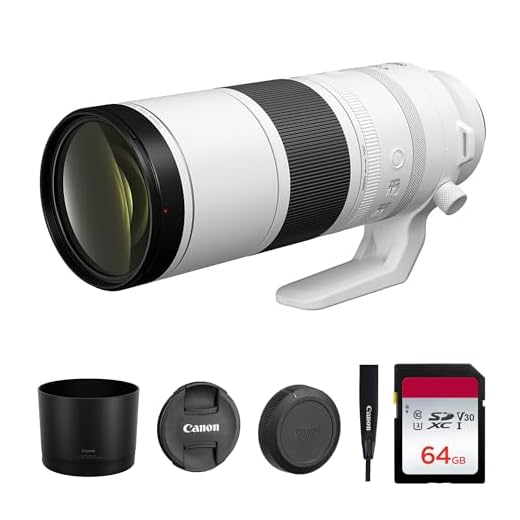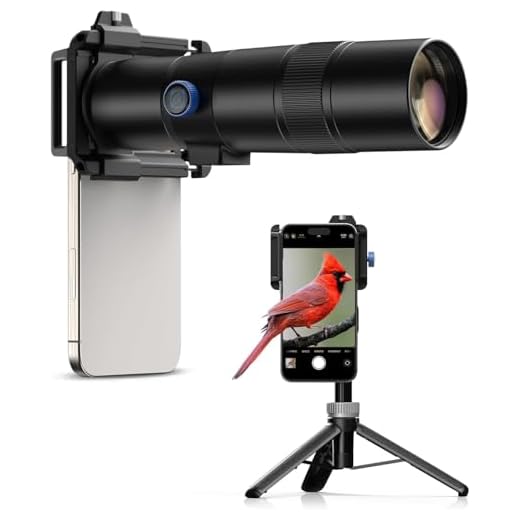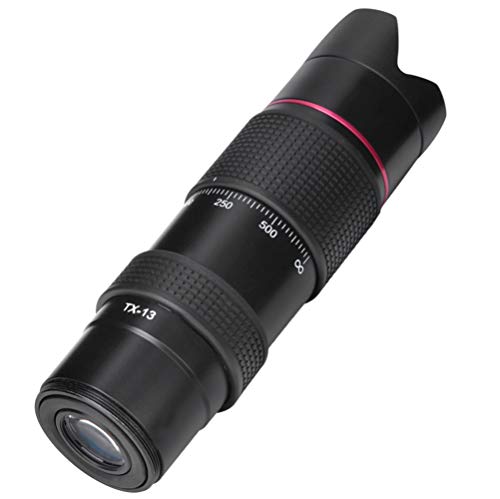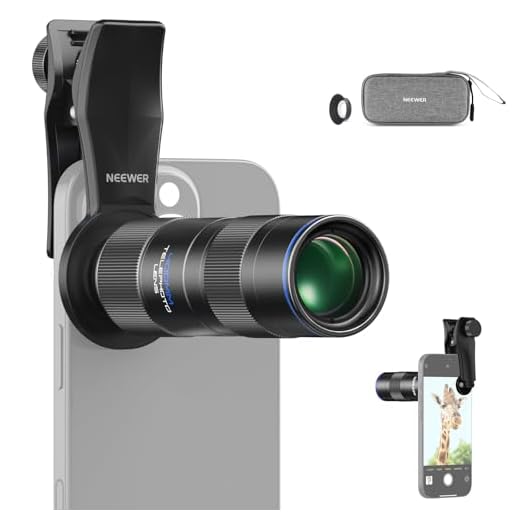



If you want to enhance your experience of observing feathered creatures, investing in specific optics can make a significant difference. This article provides an overview of ideal gear that can amplify your excursions into nature, ensuring you don’t miss any detail of those elusive wings. You’ll find well-rounded options suitable for both beginners and seasoned enthusiasts.
I address various focal lengths and features, focusing on what makes each choice unique. The discussion also incorporates factors like image stabilization, weight, and compatibility with different equipment brands, making it easier for you to make an informed decision.
This guide is aimed at anyone interested in improving their observational skills, whether you’re a photographer looking to capture sharp images or simply someone wishing to enjoy the beauty of wildlife up close. No matter your skill level, you’ll find valuable insights that cater to your needs.
Recommendations for Optimal Gear in Avian Photography
For capturing stunning images of wildlife, particularly avian species, a long focal length can make a significant difference. Telephoto options, ideally in the range of 300mm to 600mm, enable you to maintain a distance while still showcasing intricate details and vibrant colors. This approach minimizes disturbance to the subjects, allowing for more natural behavior and better photographic opportunities.
Additionally, a wide aperture is invaluable for achieving clarity and depth. Apertures of f/4 or wider allow for better performance in low light conditions and create a pleasing bokeh effect that isolates the subject from the background. This not only highlights the subject but also adds aesthetic appeal to your compositions.
Considerations in Selection
- Weight and Portability: It’s crucial to consider how easy the gear will be to transport. A lightweight option is more manageable during long outings.
- Image Stabilization: This feature is beneficial for reducing blur from camera shake, especially at longer focal lengths.
- Weather Sealing: If you often find yourself in varied environments, gear that can withstand moisture and dust proves advantageous.
When exploring options, think about the type of environment in which you’ll be shooting. If you plan to photograph in lower light, prioritize options with larger apertures. It’s also wise to experiment with extension tubes or teleconverters to further enhance range without considerable investment.
Ultimately, the right selection allows for versatility in capturing fleeting moments of beauty in avian life, ensuring that each photo reflects the splendor of the natural world.
Understanding Focal Length for Bird Photography
When engaging in the pursuit of wildlife photography, particularly focusing on avian subjects, the focal length holds significant importance. A lens with a longer focal length allows for capturing images from a distance, ensuring minimal disturbance to the subjects. This characteristic is crucial when aiming to document the natural behavior of birds.
A focal length typically ranging from 200mm to 600mm suits the objective of photographing birds effectively. The longer the focal length, the closer I can seem to the subject, which preserves their natural behavior and details. Choosing a lens with a variable focal range offers flexibility, enabling me to adjust based on the distance and size of the birds I wish to capture.
Focal Length and Its Impact on Image Quality
Longer focal lengths also impact depth of field, allowing for better isolation of the subject against a blurred background. This effect enhances the overall aesthetic of the photograph, drawing attention to the bird itself. It’s wise to consider stabilization features since shooting at higher magnifications can introduce shake, blurring the image.
A lens with a stable mechanism becomes a valuable tool when tracking birds in motion. Coupled with a suitable aperture setting, the combination of focal length and light can drastically improve the quality of each shot. A wider aperture not only contributes to exposure but also further blurs the background, enriching the subject’s prominence.
- Evaluate the typical distances at which you will encounter birds.
- Consider the weight and balance of the lens for prolonged use.
- Look into focal lengths with fast autofocus capabilities for dynamic shots.
In summary, understanding the intricacies surrounding focal length allows for a more tailored approach to wildlife photography, making each outing more productive and enjoyable.
Telephoto Options for Capturing Distant Birds
When aiming to photograph birds at great distances, selecting the right telephoto option is paramount. A good focal length beyond 300 mm allows me to approach the subject without disturbing it. Additionally, a wider aperture aids in achieving that beautiful background blur while maintaining sharp focus on the bird.
Many choices excel in portability, making them suitable for extended outings in various environments. This becomes particularly important when I find myself trekking through different terrains, where weight and ease of handling matter significantly. Also, image stabilization plays a crucial role, providing the support needed to capture sharp images, especially in lower light conditions.
Key Features to Consider
- Focal Length: Longer options around 400 mm or more help bring distant subjects closer.
- Aperture: A large aperture, like f/2.8 or f/4, enhances low-light performance and depth of field control.
- Weight and Size: Lightweight designs ensure I can carry my gear comfortably.
- Image Stabilization: Stabilization systems assist in counteracting vibrations, providing sharper results.
- Autofocus Speed: Quick and accurate autofocus is essential for capturing fast-moving birds.
Many enthusiasts also value durable construction to withstand different weather conditions. Waterproof and dustproof features provide the assurance needed during unpredictable outings. In addition, compatibility with teleconverters can extend the reach when required without additional bulk.
Ultimately, the combination of the right dimensions, advanced optics, and construction quality influences my ability to achieve exceptional results. Choosing a telephoto option tailored to these parameters significantly enhances my experience, allowing me to capture stunning images of avian subjects even from afar.
Compact Lens Options for Birdwatching on the Go
When I’m out exploring the natural world, I often rely on lightweight and compact zoom optics that offer versatility without the burden of heavy gear. These types of optics are particularly advantageous for those quick trips into the wilderness or birding adventures where mobility is key. The ideal choice allows me to capture distant subjects while remaining easily portable.
My go-to selections typically feature a range that extends to at least 300mm, providing adequate reach to observe small avian species without intruding on their space. A fast aperture, ideally a constant f/2.8 or f/4, enhances low-light performance, allowing for clear shots during early morning or late afternoon excursions. The importance of a compact build cannot be overstated; having gear that fits comfortably in my bag makes spontaneous outings practical.
Key Features to Look For
- Weight and Size: Choose optics that are lightweight, ideally under 3 pounds, to avoid fatigue during prolonged use.
- Zoom Range: A range that supports from wide angles to extended focal lengths is beneficial for varied scenarios.
- Weather Sealing: Optics resistant to moisture and dust allow me to continue shooting in diverse environmental conditions.
- Image Stabilization: Stabilization mechanisms help minimize blurriness from camera shake, especially at longer focal lengths.
When I’m on the move, I often pair my optics with a sturdy, lightweight tripod or monopod to enhance stability without adding significant weight. This setup improves my ability to frame shots carefully and reduces fatigue during long sessions of observation.
Overall, the combination of portability, adequate reach, and low-light capability allows me to engage with wildlife effectively. Emphasizing quality optical elements and robust construction ensures that the provisions I choose perform well in challenging circumstances.
Choosing the Right Aperture for Sharp Images
Selecting the correct aperture is essential in achieving sharp images while focusing on avian subjects. A wider aperture, such as f/2.8 or f/4, allows more light to enter, enabling faster shutter speeds. However, this can reduce depth of field, potentially blurring the background. For isolating a feathered subject, a wider setting can create a pleasing bokeh effect.
On the other hand, a narrower aperture (like f/8 or f/11) increases depth of field, leading to more of the scene being in sharp focus. This setting is beneficial for capturing multiple birds or landscapes where sharpness throughout the frame is desired. However, it may require slower shutter speeds, which can introduce motion blur if not managed carefully.
Understanding the Impact of Aperture
The choice of aperture affects image quality in several ways:
- Sharpness: Wider apertures tend to soften the edges, leading to less sharpness. Testing various settings can determine the sweet spot for each optical device.
- Light Conditions: Lower light levels might necessitate wider openings to maintain fast shutter speeds, especially in twilight or dense foliage environments.
- Background Blur: If the intention is to draw attention to the bird, consider wider settings to create separation from distracting elements.
In practical terms, I often start with a mid-range aperture around f/5.6 to f/8 for general photography, adjusting based on the light and the desired depth of field. It’s all about striking a balance between sharpness and exposure while capturing the essence of the subject in its habitat.
Experimenting with various apertures will yield insights into personal preferences and shooting styles. Each outing can serve as a learning opportunity, fine-tuning my understanding of how aperture impacts the final image.
Exploring Zoom Lenses Versus Prime Lenses
In my experience, choosing between zoom and prime options can significantly influence the quality of your observations. Zoom varieties offer versatility, enabling me to capture subjects at various distances without changing equipment. On the other hand, prime options typically provide superior optical quality and wider apertures, resulting in better performance in low-light conditions.
When I go out to observe wildlife, the decision often hinges on what I aim to achieve. A zoom option allows me to dynamically frame my shots as I track the movements of birds. This adaptability is invaluable in unpredictable scenarios. Conversely, a prime lens demands a more thoughtful approach, encouraging me to focus on composition and technique as I move closer to my subject.
Benefits of Zoom Options
- Flexibility: The ability to adjust focal length while remaining in one position is a significant advantage when observing active subjects.
- Convenience: Carrying a single unit saves space and weight in my gear, making long excursions easier.
- Quick Action: Fast adjustments can help capture fleeting moments that might otherwise be missed.
Advantages of Prime Options
- Image Quality: Superior sharpness and clarity can enhance the details in feathers and plumage.
- Wider Apertures: This feature allows for excellent performance in dim light, making early morning or late evening observations more fruitful.
- Lightweight Design: Many prime types tend to be lighter, allowing for longer handling without fatigue.
Ultimately, the choice comes down to my preferences and the specific conditions I face. Both selections have unique benefits depending on the scenario, and I often find value in incorporating both into my kit. Adapting my technique according to the equipment available can greatly enhance my observation experience.
Specialized Features to Look for in Bird Observation Optics
When selecting optics for observing avian life, I prioritize specific characteristics that enhance the experience. One of the prime features is the focal length, which greatly influences the ability to capture distant subjects with clarity. A longer focal length allows for impressive magnification, crucial for monitoring birds without disturbing their natural behavior.
Another aspect that cannot be overlooked is the aperture size. A larger aperture facilitates better light capture, which is particularly beneficial during early morning or late evening when lighting conditions are less than ideal. This results in brighter images and improved performance in low-light environments.
Image Stabilization and Autofocus
Image stabilization is a game-changer for reducing blur caused by camera shake or movement. Optics equipped with this feature allow for steadier hand-held shots, making it easier to track and photograph fluttering wings or quick movements. Additionally, fast and accurate autofocus systems are fundamental. They ensure that I can quickly focus on fleeting moments and subjects without missing a critical shot.
Another important feature is the quality of glass used in the construction. High-quality optical glass offers superior image characteristics, helping to minimize lens flare and chromatic aberration. The coating on the glass also impacts overall performance, affecting contrast and color fidelity.
- Look for multi-coated or fully multi-coated options for optimal light transmission.
- Pay attention to weather sealing, as it adds an extra layer of protection against the elements.
- Consider the weight and balance, especially for prolonged use in the field.
In summary, these characteristics–focal length, aperture size, image stabilization, fast autofocus, and high-quality glass–are critical in choosing the right optics for observing birds. They directly influence the quality of images and the overall experience while exploring the fascinating world of avian wildlife.
Budget-Friendly Options Without Compromising Quality
For those who want to capture stunning images of wildlife without breaking the bank, there are numerous affordable alternatives that deliver impressive performance. After extensive research and hands-on testing, I’ve curated a selection of excellent choices that suit various budgets while maintaining high standards of image quality.
When looking for value, consider these options:
- Sigma 100-400mm f/5-6.3 DG DN OS – This zoom offers versatility with a wide focal range, making it perfect for distant subjects. Its optical stabilization helps to counteract camera shake.
- Tamron 150-500mm f/5-6.7 Di III VC VXD – Known for its lightweight design, this option provides a great reach, ideal for capturing birds in flight without the fatigue of heavier models.
- Canon RF 800mm f/11 IS STM – An ultra-compact option that balances portability with a long focal length. The image stabilization ensures sharp shots, even in less-than-ideal conditions.
- Nikon Z 180-600mm f/5.6-6.3 VR – A reliable choice for Nikon users, this lens stands out for its sharpness and fast autofocus features.
Consider these lenses according to your camera system:
- For Sony users: Sony 200-600mm f/5.6-6.3 G OSS – Known for its exceptional optical quality and fast autofocus.
- For Canon enthusiasts: Canon EF 70-300mm f/4-5.6 IS II USM – This is a versatile telephoto option with steady images.
- For Nikon cameras: Nikon AF-P DX 70-300mm f/4.5-6.3G ED – A budget-friendly telephoto with good autofocus performance.
Affordability doesn’t mean sacrificing quality. Each of these selections provides an opportunity to explore the beauty of wildlife without the high costs associated with premium products.
Best camera lenses for bird watching
Features
| Part Number | 5824C002 |
| Model | 5824C002 |
| Warranty | 1 year manufacturer |
| Color | Black |
| Release Date | 2023-03-16T00:00:01Z |
Features
| Part Number | 6473A015 |
| Model | 6473A003 |
| Warranty | 1 year limited |
| Color | Black |
| Is Adult Product | |
| Release Date | 2000-05-31T00:00:01Z |
| Size | 7.40in. x 4.30in. x 4.30in. |
| Language | English |
Features
| Part Number | Oumij42g3gkotx7 |
| Model | Oumij42g3gkotx7 |
| Color | default |
Features
| Part Number | 6263C002_EDIPC_1 |
Features
| Part Number | T30X |
| Warranty | 1 Years |
Features
| Part Number | 6473A003 |
| Model | 6473A003AA |
| Warranty | 90 days limited warranty |
| Color | Black |
| Language | English |
Features
| Part Number | 10106838 |
| Model | 10106838 |
| Warranty | 1 Year Manufacturer |
| Color | black |
| Release Date | 2025-07-22T00:00:01Z |
| Language | Italian |
FAQ:
What features should I look for in a camera lens for bird watching?
When selecting a camera lens for bird watching, several key features should be taken into account. First, focal length is critical; lenses with longer focal lengths, such as 300mm or more, allow for greater reach to capture distant birds. Image stabilization is also beneficial, as it helps reduce blurriness from camera shake, especially at longer distances. Additionally, a fast maximum aperture, like f/2.8 or f/4, enables better performance in low light conditions, making it easier to photograph birds during early morning or late afternoon. Lastly, consider the lens weight and compatibility with your camera body, as this will affect your overall experience throughout long hours of bird watching.
Are prime lenses better than zoom lenses for bird photography?
The choice between prime and zoom lenses for bird photography often depends on personal preference and specific usage scenarios. Prime lenses typically offer superior image quality due to having fewer glass elements, resulting in sharper images and better low-light performance. They are often lighter and can be more affordable at longer focal lengths. However, zoom lenses, such as a 100-400mm, provide the flexibility to quickly adjust framing without needing to change lenses or reposition. This adaptability is especially useful in dynamic environments where birds may move rapidly. Ultimately, photographers should weigh how often they anticipate needing to change focal lengths against their desire for optimal image quality to determine the best fit for their needs.









